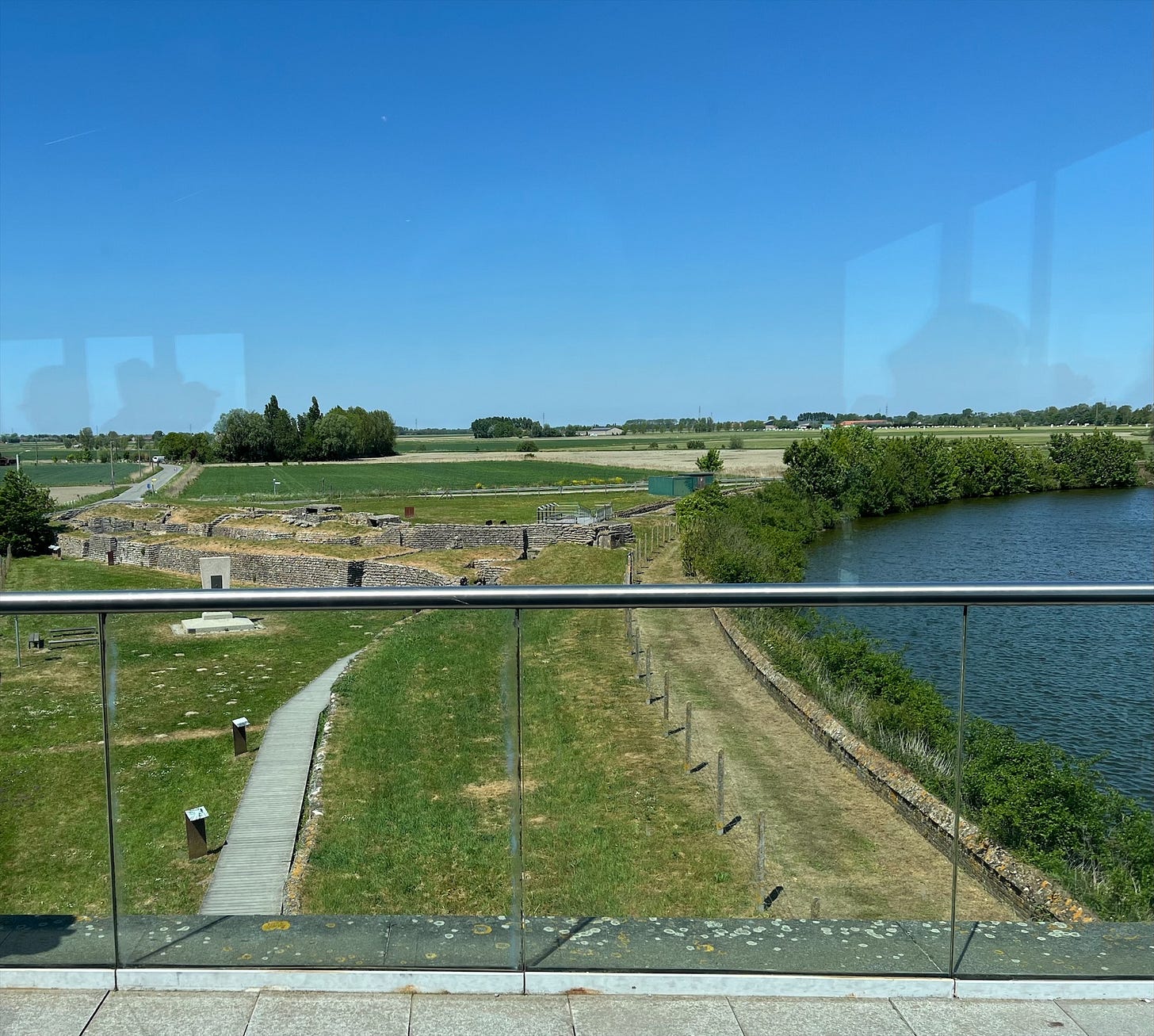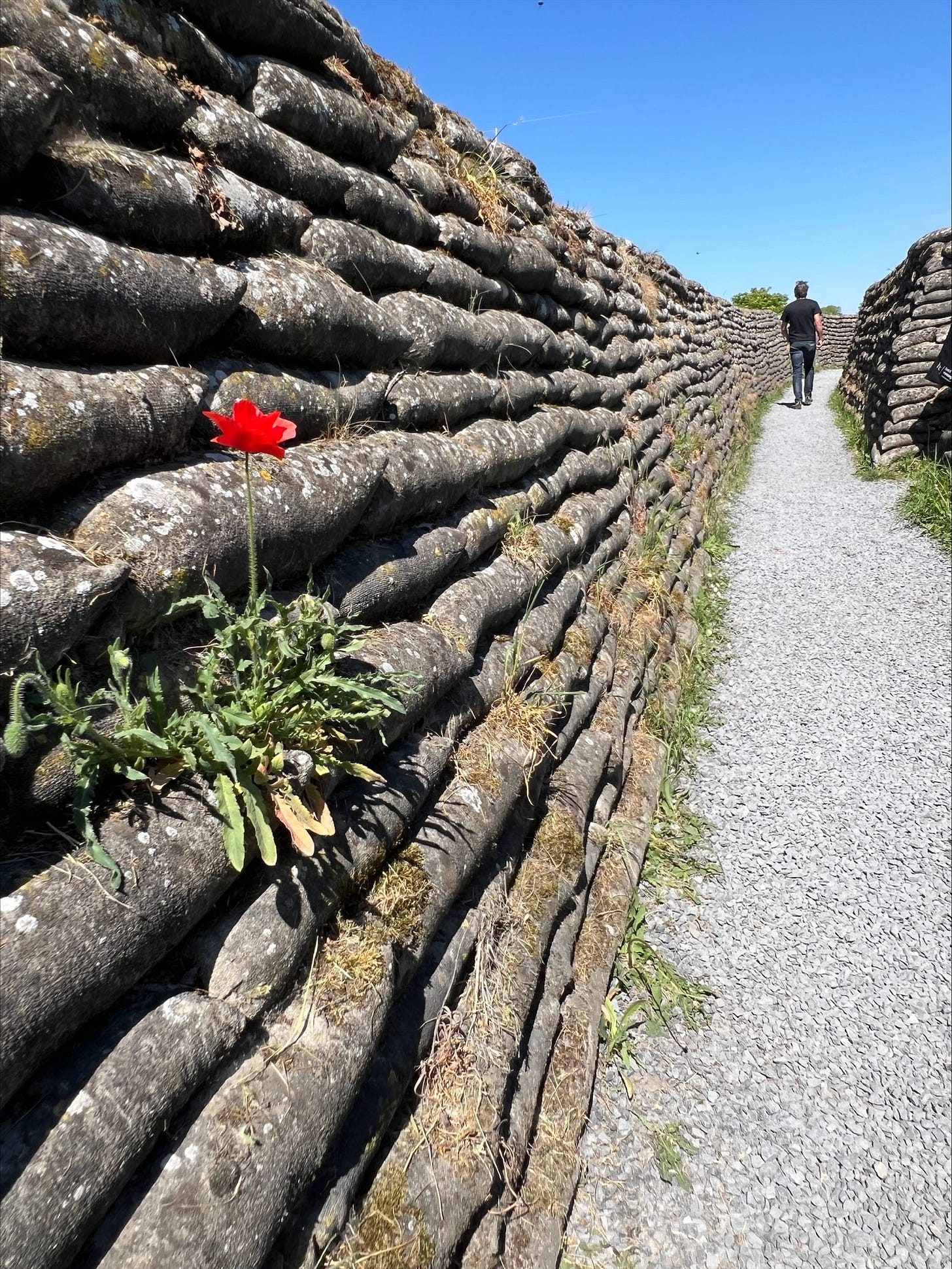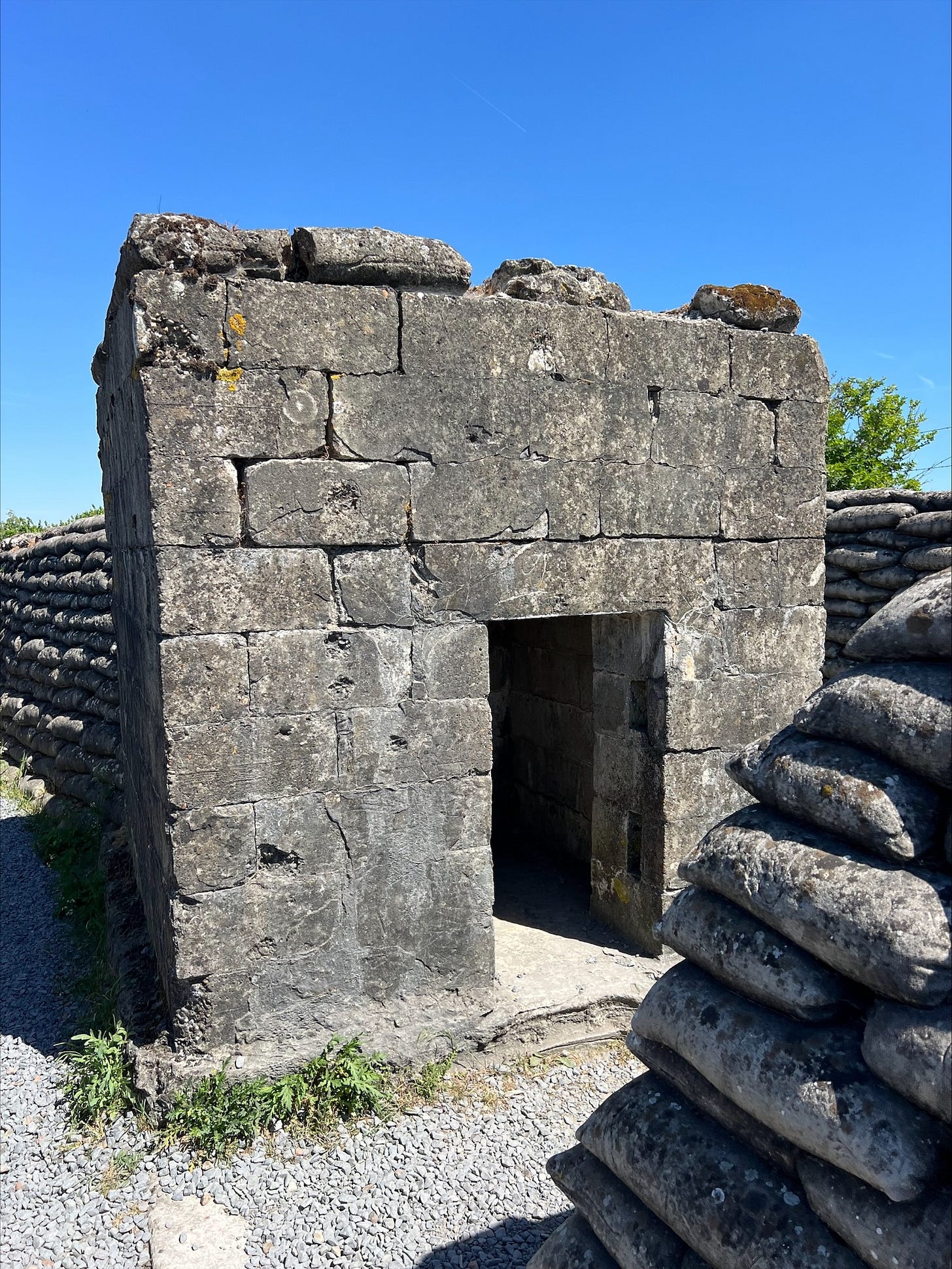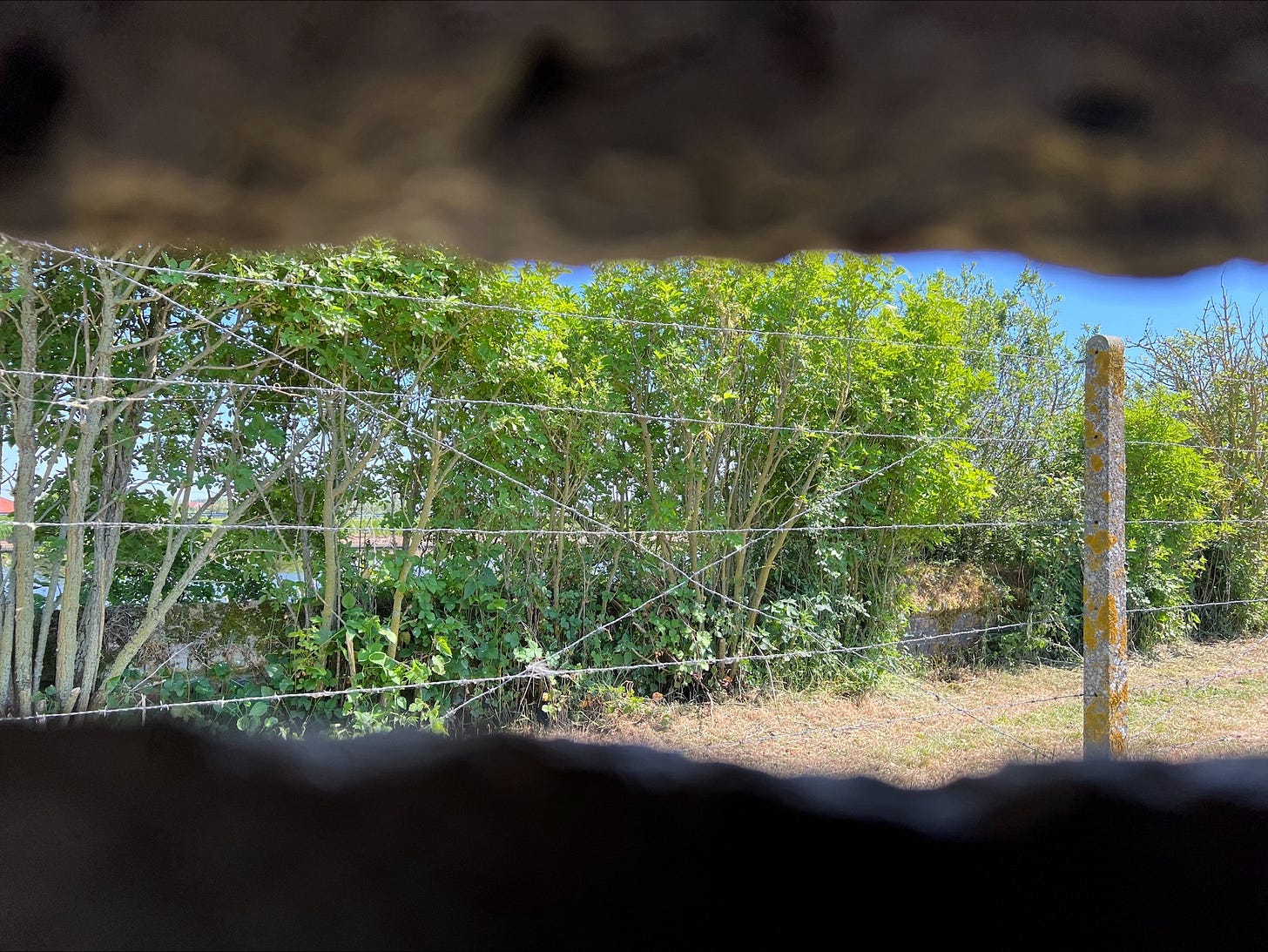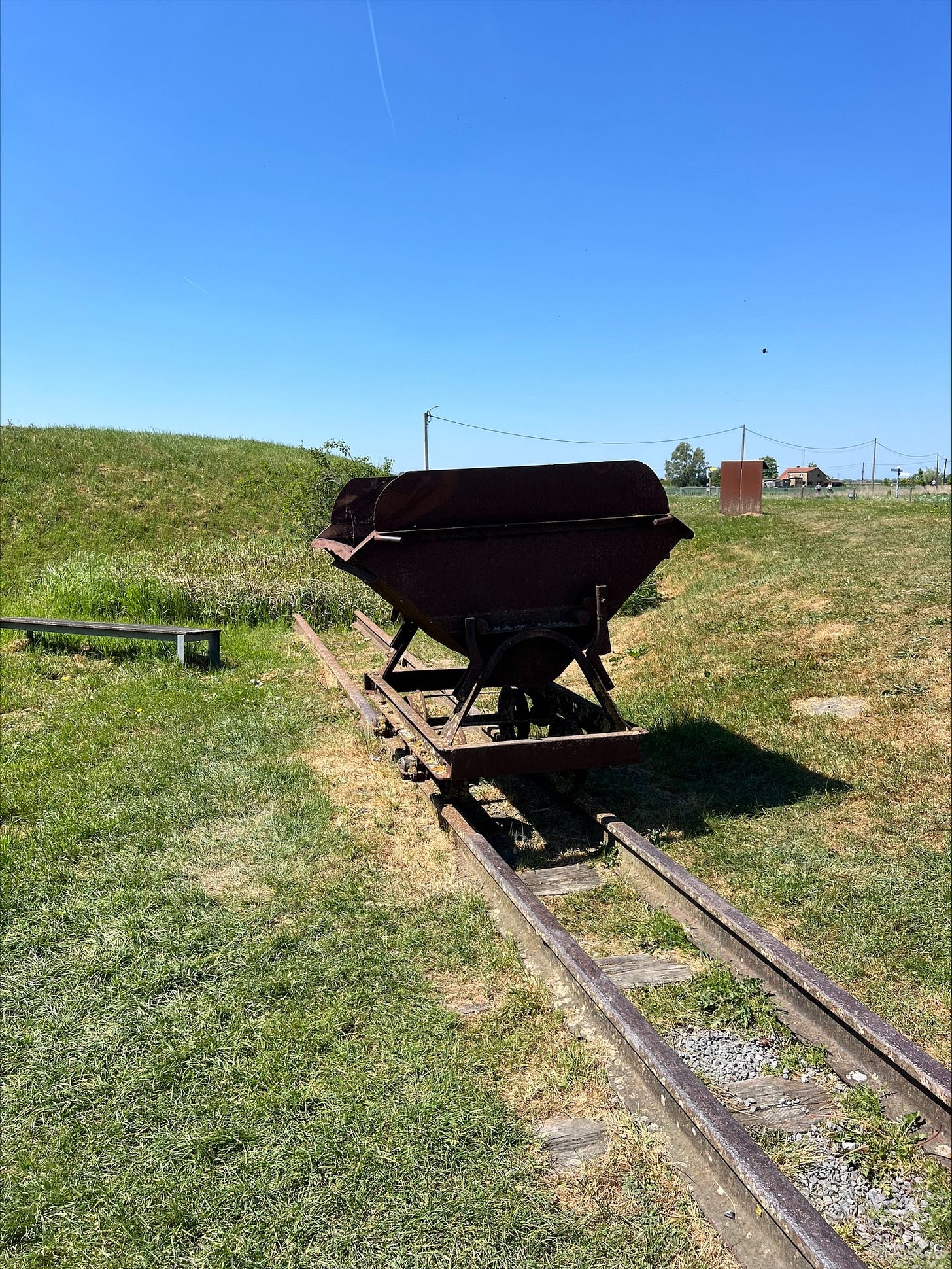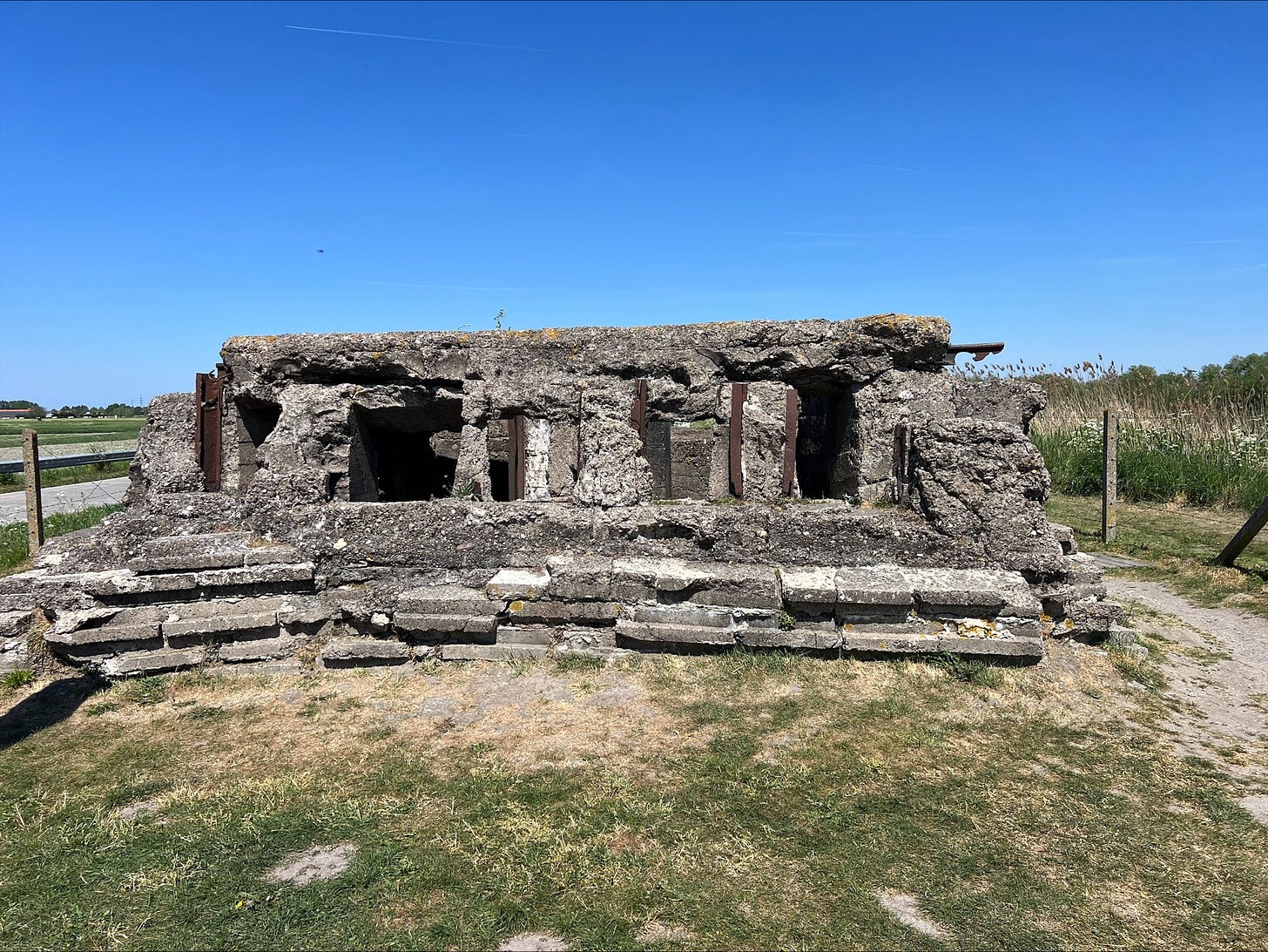“In 1915 the Belgian army tries to dislodge the Germans from the petrol tanks north of the city of Dixmude (Diksmuide). After two failed attempts the Belgians decide to dig a trench towards the drums. The Germans however manage to capture part of it. In order to suppress the German threat, Belgian military engineering creates, by the end of 1915, a breach in the Yser dike. The two camps are now only separated by a mere ditch. The trench is then transformed into an impregnable position, called Trench of Death because of the victims buried there after the German attack.” (The Trench of Death Museum)
Today there is a small museum perched on the canal bank in this very peaceful location in the Belgian countryside. Located 1.5km north of Diksmuide and 14km south of Nieuwpoort and the Belgian coast, this is nearly at the very end of the western front. The museum overlooks the restored trenches and contains an exhibition about the trenches, the First World War in the area, and the harsh reality of the fighting that took place here, and of life for soldiers posted here. A rooftop balcony gives a view over the system of restored trenches and bunkers and, decorating the floor of the top storey of the building, is an aerial photo taken in 1916, which gives a good idea of the huge extent of the trench development and the opposing Belgian and German lines.
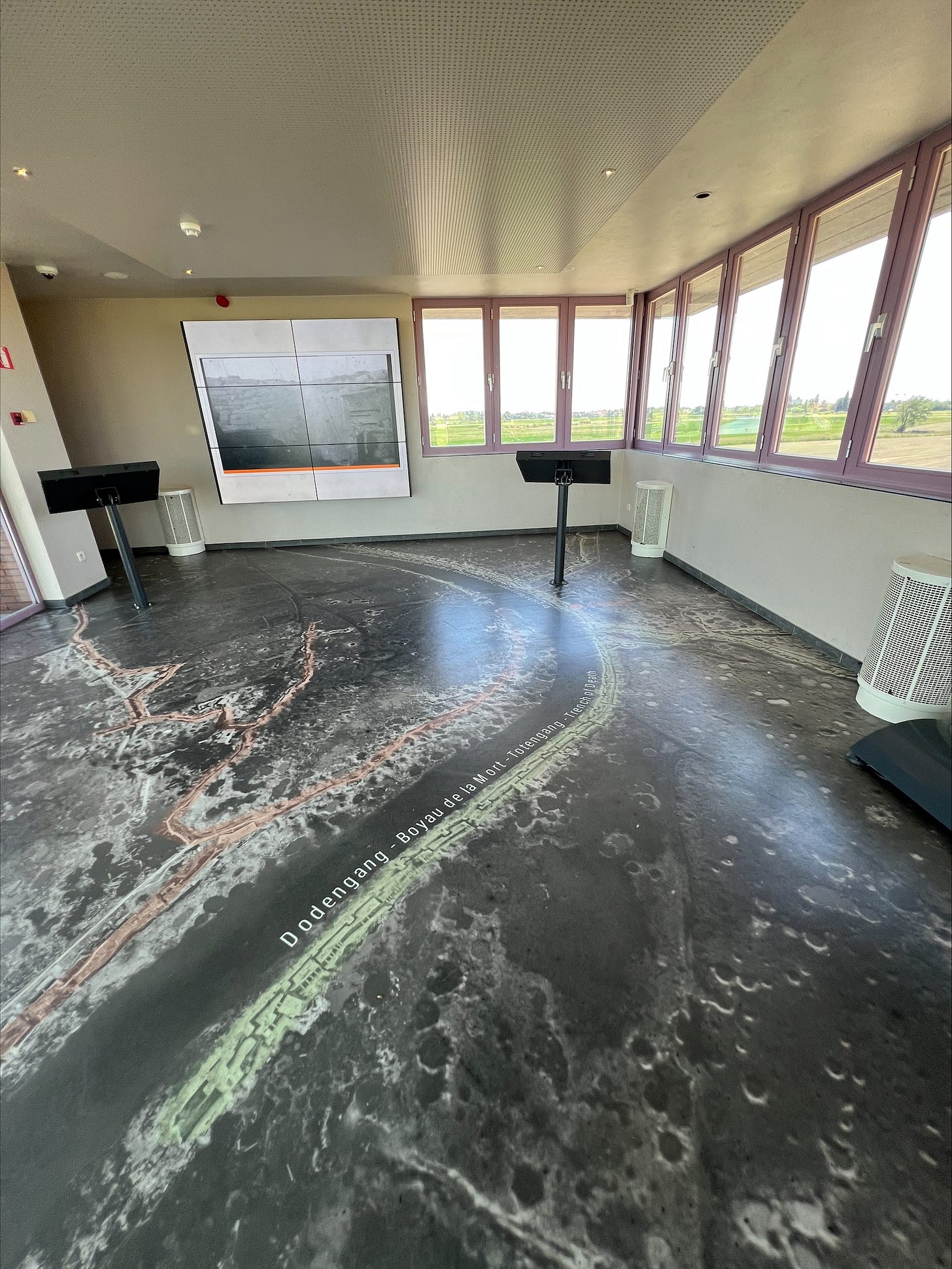
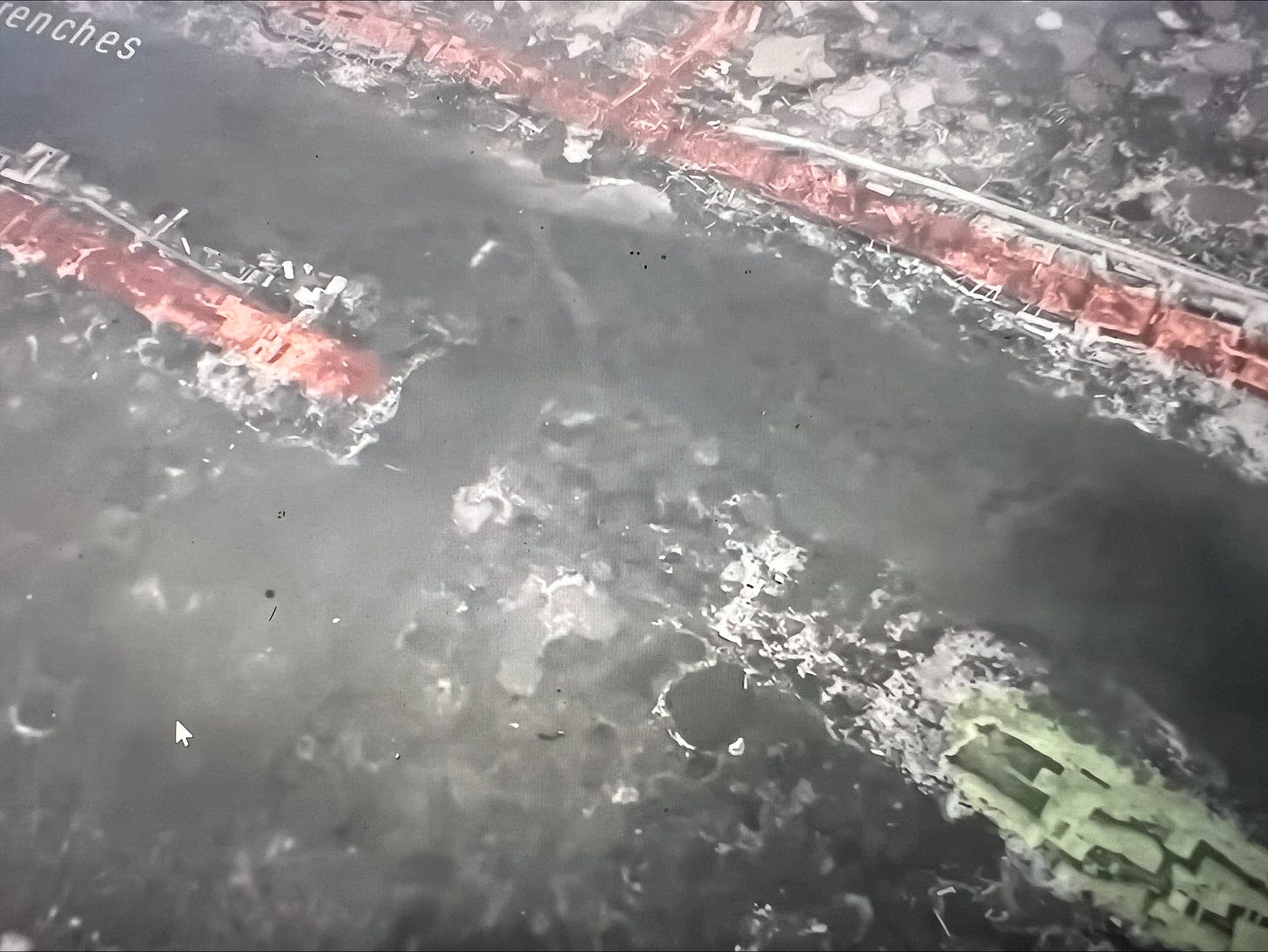
After the “Inundations” of October 1914 where the Belgians opened the sluice gates on the river Yser and flooded the land to halt the German advance, the Belgian and German front lines met at a spot facing each other on either side of the bank of the river Yser near Diksmuide. For several months the war had been fought across these flooded areas of farmland with any high point captured a valuable asset from where to observe the enemy. This was the defensive position that the Belgian troops had fallen back to and were holding off the German advance.
Although the Belgian position here was primarily defensive some attacks were made. In early May 1915 4th Division were sent to forward to the enemy lines but their advance was halted by German artillery and machine gun fire. Eventually the German firing along with the barbed wire, and the waterlogged ground, proved too much of an obstacle and the Belgians were forced to withdraw. One of the key high points held by the Germans were two very tall fuel tanks on the west bank of the Yser. On 9th May the Belgians staged an attack against the Germans to try to dislodge them from their high point on these fuel cylinders but again the flooded land caused a problem for the attackers and again they had to withdraw. Although the inundations had saved Belgium from German invasion 7 months earlier it was to create on going problems for both sides. The waterlogged land was difficult to advance through and it was impossible to tell the different between ditch and trench or a shell hole.
After these two failed attacks by the Belgians it was decided that a trench would be dug on the west side of the river bank which would link up all of the other smaller trenches and fragments of trenches already formed there, in some cases these were little more than shallow ditches. Work began in late May 1915 and this new trench was to be called “Boyau de communication de la borne 16 de l’Yser” shortened to “Boyau de l’yser” and soon after, “Boyau de la Mort” – The Dodengang – the Trench of Death.
It was aptly named and, within its context, not at all over dramatised. It is not a place you would have wanted to be posted to.
The trench formed a key role in defending this section of the front line and preventing further German advances. The Germans and Belgians faced each other across the river, the Belgians on the west bank, the Germans on the east. To add to the immense threat facing the Belgians the Germans also had a toehold on the west bank, to the north of the Trench of Death which meant that the Belgians holding these trenches were under attack from two different directions. In some areas the frontlines were less than 50m apart.
The restored sections of the Trench of Death here are approximately 400m long and concrete bags now take the place of the original sandbags. The front trench nearest the river is laid out in a zig zag pattern to disrupt the sightlines and direction of fire of any potential German trench raiding parties and for the prevention of the spread of blast should an enemy artillery shell hit its mark and land in the trench. Observation bunkers looking out over the canal towards the German front line are interspersed along the length of the trench. Behind the first trench lies a second long straight trench, from where a system of light railways bought supplies into the complex.
At the very north end of the trench complex there is a concrete bunker and there the Belgian trench line stops. A couple of hundred meters away across what would have been no mans land lies another concrete bunker, this time a German one, which marks the start of the German trench line on the west side of the Yser river. This area was the scene of heavy fighting for much of the war and a key part of the front line There was continuous fighting here throughout the duration of the war, if not large offensives then trench raids, artillery fire, patrols etc. There was constant risk and a significant number of casualties were sustained at this location and no wonder with the frontlines being so close together and landscape reduced to little more than a boggy muddy swamp. The Trench of Death earned its name.
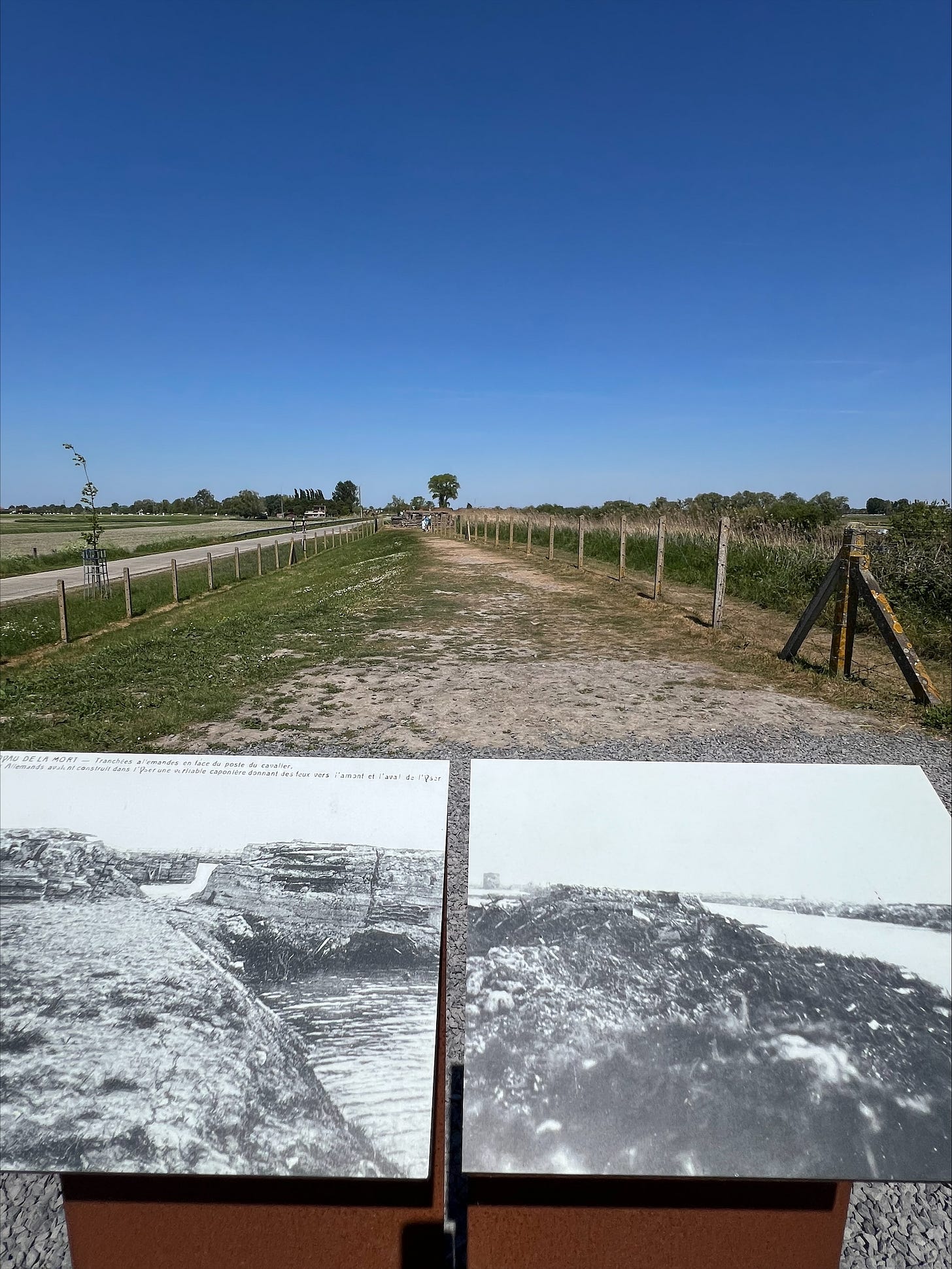
.




